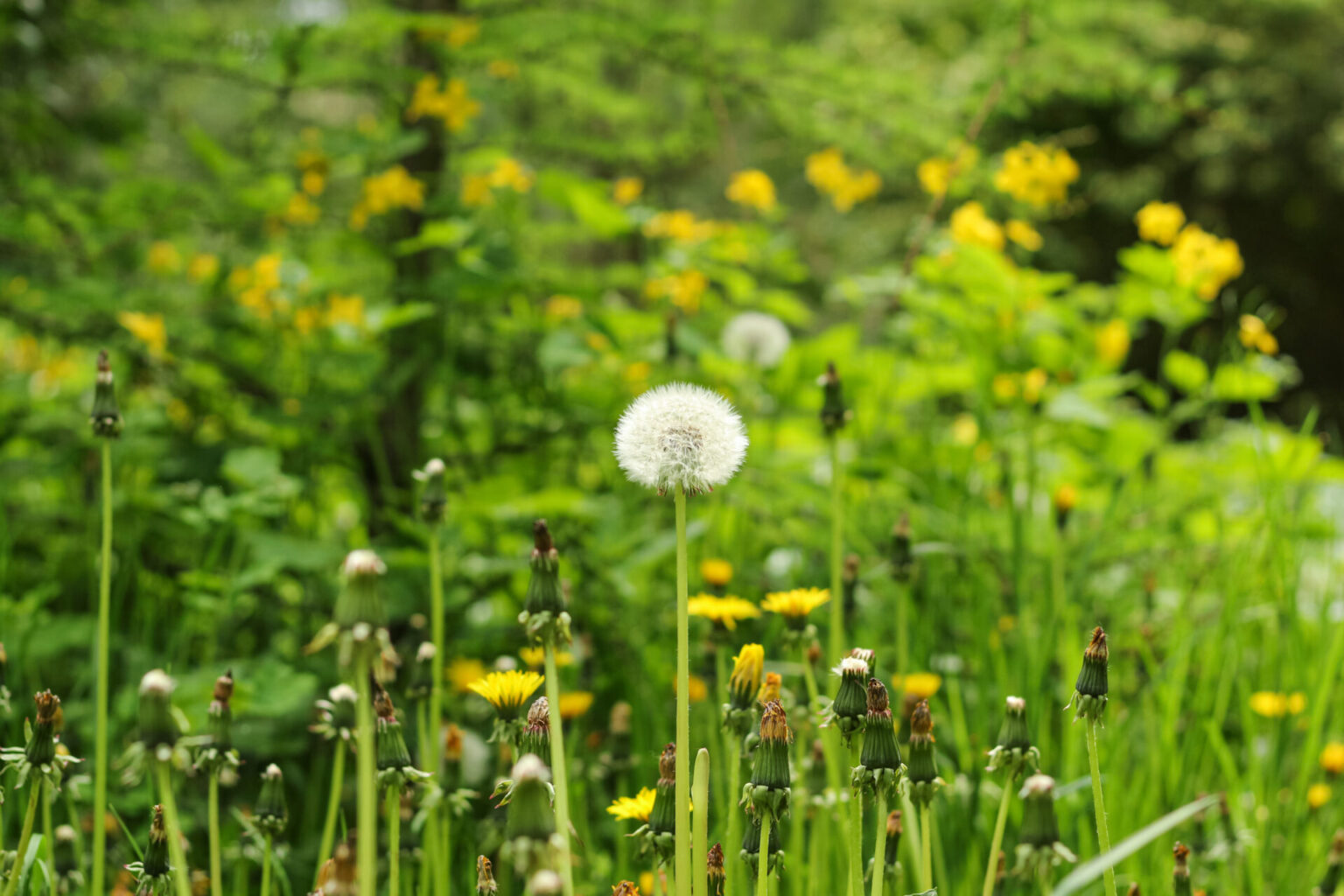
Dandelion, sometimes considered a weed, has actually been used for centuries as both food and medicine and offers a remarkable array of benefits across all its parts—leaves, flowers, stem, and root. While the root is well known for addressing liver and digestive issues, the leaves excel in treating kidney issues and fluid retention and serve as a nutritious addition to meals. Even the sap from its stem helps to vanquish warts.
After the yellow flowers have died away, what is left is whimsically known as fairy clocks, a perfect sphere of wispy silver seeds with wings. It is well known that if you make a wish before blowing hard on the fairy clock, and all the seeds fly away with one blow, your wish will come true.
When dried and ground, dandelion root makes a bitter, black brew, which is why it was used as a coffee substitute during the Second World War when the real bean was a luxury. Dandelion Root tea (the same as Dandelion Coffee) is still enjoyed today as an enjoyable beverage.
Dandy Chai, created by Carl Kay and a favourite in Mim Beim’s range of herbal teas, contains Dandelion Root and a combination of classic Chai spices, including cardamom, cinnamon, and ginger. Settle your tummy, treat your liver, and warm the cockles of your heart with this blissful blend.
Nutritionally dense, dandelion leaves boast a wealth of essential elements including calcium, phosphorus, potassium, iron, flavonoids, magnesium, and vitamin B, alongside being a reliable source of betacarotene, the precursor to vitamin A. Dandelion’s young, tender leaves lend a delightful sweetness, making them a delightful inclusion in salads and stir-fries. Best to pick your dandelion leaves from your garden or field rather than the roadside or where the plants may have absorbed lead or other toxins.
Dandelion Root is a standard in every herbalist’s dispensary. Dandelion Root is a classic bitter herbal tonic, long esteemed for its efficacy in addressing liver and digestive conditions, including hepatitis, cirrhosis, liver toxicity, gall bladder inflammation, constipation, bloating, and flatulence. Its bitterness plays a pivotal role in liver health, stimulating bile production and flow. Bile, pivotal in fat digestion and detoxification, aids the liver in eliminating waste, toxins, and surplus hormones. Bile and bilirubin (also from the liver) contain the pigments that make poo brown.
Medicinally, the leaves are prized for their diuretic properties, which aid in conditions like fluid retention, high blood pressure, and PMS. Unlike pharmaceutical diuretics, dandelion leaves richly provide potassium, sidestepping any depletion concerns. The French common name for Dandelion is “pissenlit,” which translates to “wet the bed,” hinting at its diuretic potency.
Even the stem, when cut, oozes a white sap, which has been used historically as a wart treatment. Scrape the wart slightly and add a few drops of sap daily for a few weeks.
Dandelions (Taraxacum officinale) are as easy to grow as … weeds. The roots of the dandelion grow deeply into the ground and are best collected in their second year of growth, harvested in autumn after flowering. Pick the young leaves for salads. Dandelions are perennial, so the leaves will keep growing if the root is left alone. The long root draws up nutrients from deep in the soil. Avoid harvesting dandelions near roads or public areas as they may have been sprayed with herbicide or exposed to toxic chemicals. Throw any leftover dandelions onto the compost as they are full of minerals and work as a compost activator in a similar way to comfrey, nettles, yarrow, and seaweed.
The Dandelion root needs to be dried and roasted before using. Wash and dry the large taproot, slicing off any small rootlets. Dry in a cool oven 90°C (200°F) until brittle, then roast it 180°C (350°F) until it reaches a dark, nutty brown. Grind until the size of coarse-ground coffee. Use in a coffee percolator, machine or teapot.
Add fresh young leaves to salads and juices. Steam or boil older leaves, and they will taste like spinach. Add to stir-fries.
In essence, the dandelion stands as a testament to nature’s multifaceted bounty, offering not just a nice addition to a side salad but a treasure trove of medicinal virtues.
Mim Beim’s DANDY CHAI combines all the benefits of Dandelion Root with a delicious blend of warming, aromatic digestive herbs and spices.